We have to give Yamaha credit for launching the modern era of sport-touring. Back in 2001, we snuck a ride on the then-Europe-only FJR1300, sending Editor Hoyer to the Continent to see what all the fuss was about. At the time, Yamaha couldn't figure out if it wanted the bike here or not, but Hoyer came back super impressed by the FJR's category-stretching performance. It was bigger than some of its competition but not too big, with major power and a new level of comfort and agility. Lucky for us, by 2002, the FJR hit the States and accelerated hard to the front of the pack by winning Best Sport-Tourer. And the rest is history.
But, frankly, the FJR itself became history in the ensuing decade as the category witnessed a rapid escalation of technical innovation and performance.
Last year, Yamaha treated its FJR to a host of major updates to help the bike get back in the conversation against the likes of the award-winning BMW K1600GT and Kawasaki Concours 14. While we enjoyed the power and comfort of the 2013 model (and appreciated that it hadn't grown in size while most of its competitors had gotten bigger), we were disappointed in the handling and ride provided by the suspension setup (2013 Sport-Tourer Motorcycle Comparison Test).
Which makes Yamaha's big news in 2014—KYB electronically adjustable suspension—all the more welcome. The ES model differs from its still-available-and-$1,000-less-expensive FJR1300A sibling not just in electronic suspension. A new front fender and triple clamp work with the ES's inverted fork, while the suspension front and rear gets much-needed stiffer spring rates. Further, an additional pair of LCD dash screens feature menus that facilitate the push-button suspension adjustment. Bridgestone BT023 radials fitted to both models now have a more durable compound.
The new electronic fork loses the base model’s spring preload adjustment, while the shock gains a servomotor-driven hydraulic preload adjuster. The rear suspension’s four settings are meant to accommodate a solo rider, a solo rider with loaded bags, a rider and passenger, or a rider and a passenger with loaded bags. The same pair of switches located on the left handlebar that are used for menu navigation, electric windscreen, and (standard) heated-grip adjustments also handle suspension setup duties. The spring-preload menu only appears when the bike is stationary and in neutral with the engine running. A single increment step is so subtle and quick that you might miss the change while sitting in the saddle. But switch between minimum and maximum and the 10-second rear ride-height change is pretty dramatic.
The three damping presets—“Soft,” “Std,” and “Hard”—can be altered on the fly, while the custom tailoring available for each must be done at a standstill. Custom adjustment within each preset covers a range of seven increments for a total of 21 sequential “clicks” that globally affect front and rear compression and rebound damping. The presets are specific to each preload setting and remain in memory until altered.
After much experimentation in all kinds of riding, the following preferences worked well for my 175-pound riding weight. Solo preload/Std +3 damping in town yields a lower seat height and good degree of comfort without excess fore-aft chassis motion, even in light of all the stop-and-go work. Solo/Soft -3 delivered plushness on the superslab, while a Passenger/Hard +3 combo provided additional cornering clearance, feedback, and chassis control during spirited one-up canyon carving.
In fact, dialed up for sport, the FJR exceeded my expectations for a machine of this weight class. Turn-in is surprisingly light, and the chassis maintains a natural feel with neutral bank-holding ability. Set your line and it’s on it. And while we are glad the FJR is a bit lighter and smaller feeling than much of its competition, you still feel its not-insubstantial weight in full side-to-side transitions at a medium-to-fast pace, where it’s a bit slow to respond. Overall, though, the suspension upgrade has made a huge difference in the overall performance and feel of the FJR.
As most sport-tourers do, the FJR offers plenty more adjustability elsewhere. Its plush saddle’s two height positions vary by nearly an inch, while the handlebar offers a trio of positions. The electric windscreen’s adjustment range covers below-line-of-sight unobstructed sport riding to excellent touring wind protection when fully raised. Even the three temperature presets for the heated grips can be further tweaked within a setup menu. All the better to enjoy the range provided by the 6.6-gallon fuel capacity.
Of last year’s updates, Yamaha Chip Controlled Throttle (YCC-T) and features linked with the ride-by-wire system have played a profound role in the FJR modernization. The standard-equipment cruise control is seamless in operation. As is the traction control, which employs a combination of ignition, fuel delivery, and throttle-plate control, making for very smooth intervention.
I got to test the TC while riding in the rain, where I noted an added sense of control after toggling D-mode from Sport into Touring. Both modes provide unrestricted peak power output; the only difference is in the throttle-response map. This, along with the formidable stopping power provided by the “unified” Nissin braking system (rear pedal also activates two pistons in the right front caliper) and quick-cycling ABS, further boosted confidence in the wet.
While the BMW K1600GT has enjoyed its recent run as the most luxurious, capable, and technically advanced sport-touring bike we have ever tested, it is a large beast that weighs 718 pounds dry, which does stretch the definition of “sport-tourer” a bit, even with the bike’s phenomenal performance. The attraction of the FJR1300ES is that, at 642 pounds dry, it feels (and is) significantly smaller and lighter.
In some respects, then, not giving the FJR a massive redesign to help it “catch up” with the rest of the class has helped keep it nearer to traditional sport-touring virtues found in what might be described as an all-day sportbike.
The FJR is now a viable alternative to, as well as a $4,600 savings over, the BMW. My money says Yamaha has new legs to stand on when purchase discussions begin.
| |GENERAL| |LIST PRICE|$16,890| |WARRANTY|12 mo./unlimited mi.| |ENGINE & DRIVETRAIN| |ENGINE|liquid-cooled inline-four| |BORE & STROKE|79.0 x 66.2mm| |DISPLACEMENT|1298cc| |COMPRESSION RATIO|10.8 :1| |VALVE TRAIN|dohc, 4 valves per cylinder, shim adj| |VALVE-ADJUST INTERVALS|26,600 mi.| |INDUCTION|(4) 42mm throttle bodies| |ELECTRIC POWER|590 w| |CHASSIS| |WEIGHT:|| |TANK EMPTY|642 lb.| |TANK FULL|684 lb.| |FUEL CAPACITY|6.6 gal.| |WHEELBASE|61.1 in.| |RAKE/TRAIL|26.0˚/4.3 in.| |SEAT HEIGHT|31.4/32.3 in.| |GVWR|1111 lb.| |LOAD CAPACITY (TANK FULL)|427 lb.| |SUSPENSION & TIRES| |FRONT SUSPENSION|43mm KYB| |CLAIMED WHEEL TRAVEL|5.3 in.| |ADJUSTMENTS|compression and rebound damping| |REAR SUSPENSION|KYB| |CLAIMED WHEEL TRAVEL|4.9 in.| |ADJUSTMENTS|compression and rebound damping, spring preload| |FRONT TIRE|120/70ZR17 Bridgestone Battlax BT023F| |REAR TIRE|180/55ZR17 Bridgestone Battlax BT023| |PERFORMANCE| |1/4 MILE|10.94 sec. @ 121.13 mph| |0-30 MPH|1.1 sec.| |0-60 MPH|2.7 sec.| |0-90 MPH|5.5 sec.| |0-100 MPH|6.7 sec.| |TOP GEAR TIME TO SPEED:|| |40-60 MPH|4.4 sec.| |60-80 MPH|4.4 sec.| |MEASURED TOP SPEED|145 mph| |HORSEPOWER|123.1 hp @ 8070 rpm| |TORQUE|87.6 lb.-ft. @ 6600 rpm| |FUEL MILEAGE| |HIGH/LOW/AVERAGE|38/32/36 mpg| |AVG. RANGE INC. RESERVE|238 mi.| |BRAKING DISTANCE| |FROM 30 MPH|35 ft.| |FROM 60 MPH|138 ft.| business management essays
zp8497586rq











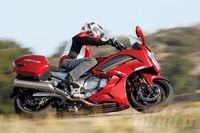
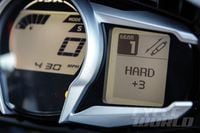
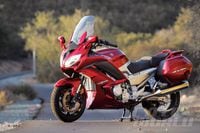
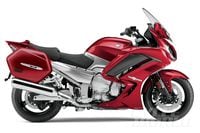
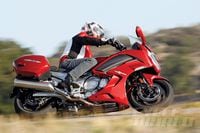
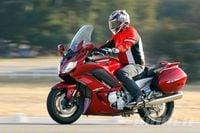
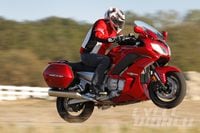

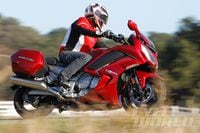
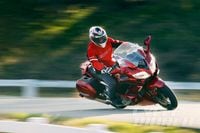
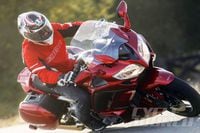
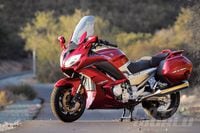
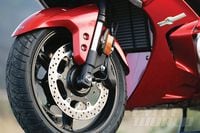

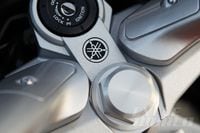
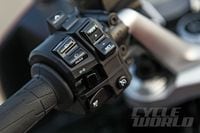
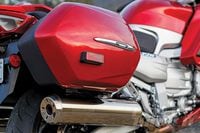
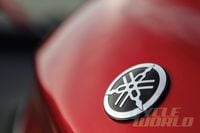
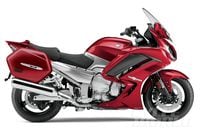
/cloudfront-us-east-1.images.arcpublishing.com/octane/AUE3NFVRRZDSBIDVUGIYIDQNUI.jpg)
/cloudfront-us-east-1.images.arcpublishing.com/octane/LYR62CH2WNBMHJJVXVATZHOUE4.jpg)
/cloudfront-us-east-1.images.arcpublishing.com/octane/RBCTRGBQYBDK7A6XPG3HKPS7ZQ.jpg)
/cloudfront-us-east-1.images.arcpublishing.com/octane/MQXQRYMZVBCWJIRYP3HEN3SHVE.jpg)
/cloudfront-us-east-1.images.arcpublishing.com/octane/TSPODNNEWRDSVJGUCNQTDG4ADI.jpg)
/cloudfront-us-east-1.images.arcpublishing.com/octane/X5TB7BDV4BA2RPSY54ZGK27RP4.jpg)
/cloudfront-us-east-1.images.arcpublishing.com/octane/REUHOJXRDBGZ5IHBYZCCBCISPA.jpg)
/cloudfront-us-east-1.images.arcpublishing.com/octane/52LGJTCKBFEHDF7S7H4CVUIMGM.jpg)
/cloudfront-us-east-1.images.arcpublishing.com/octane/YMWAIPIPSJAOXOU3QMJMGH37OM.jpg)


/cloudfront-us-east-1.images.arcpublishing.com/octane/EJ6KZRGAYBCVXNL2PJXL37UVWQ.jpg)
/cloudfront-us-east-1.images.arcpublishing.com/octane/AAN4TI76M5H5JMUVEIGASWXBDU.jpg)
/cloudfront-us-east-1.images.arcpublishing.com/octane/P3RXD2UCPFF37CMB7CHPVKXORY.jpg)
/cloudfront-us-east-1.images.arcpublishing.com/octane/VZEG2EJI2RDFZNHLRZMU56MD3Q.jpg)
/cloudfront-us-east-1.images.arcpublishing.com/octane/GVJQO5FFOFBWNGODOBRB4FBAW4.jpg)
/cloudfront-us-east-1.images.arcpublishing.com/octane/BIVAK2SFIBDJJM25E7I5VU2FJE.jpg)
/cloudfront-us-east-1.images.arcpublishing.com/octane/CH5VX52UG5CFHOVH5A6UYEFWWA.jpg)
/cloudfront-us-east-1.images.arcpublishing.com/octane/ZVGJNGZRU5C33N7KN23BBFKSC4.jpg)
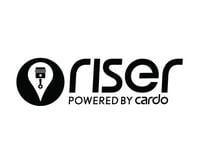
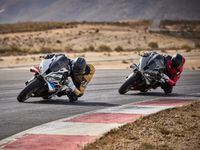
/cloudfront-us-east-1.images.arcpublishing.com/octane/CZ5OM3E43ZEXJHY7LCYXCHLIKI.jpg)
/cloudfront-us-east-1.images.arcpublishing.com/octane/DF5T4K5KPZFJXFCTGPYR77PKJM.jpg)
/cloudfront-us-east-1.images.arcpublishing.com/octane/RMCT2KVQBJHBZMRTSLOVPMOILU.jpg)